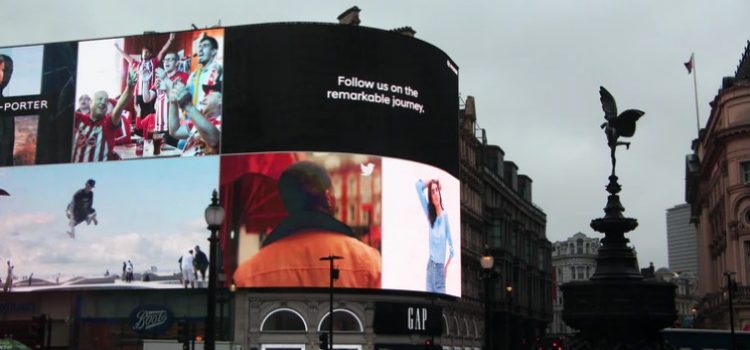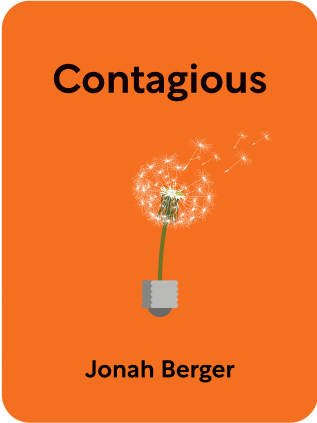

This article is an excerpt from the Shortform book guide to "Contagious" by Jonah Berger. Shortform has the world's best summaries and analyses of books you should be reading.
Like this article? Sign up for a free trial here .
What are some examples of good marketing? What tactics did these companies successfully implement?
In Contagious, Jonah Berger discusses effective marketing strategies used by companies, from Apple’s earphones to the gamification of airline travel. Knowing these examples of good marketing can help you apply the lessons to your own marketing strategy and improve your approach.
Learn from the examples of good marketing discussed below.
Examples of Good Marketing
The following examples of good marketing show how the most effective marketing tactics can be implemented in real-life strategies.
Make It Remarkable: Blendtec and JetBlue
You can make a product or idea seem remarkable by using your marketing materials to emphasize the thing that makes it interesting or notable. Clearly tell the consumer what makes your product so special. For instance, can your product do something that was previously thought to be impossible? Does it break and improve upon an expected or accepted pattern? If so, make this a key element of your marketing strategy.
Take the example of Blendtec blenders. These products seem ordinary enough. They’re just blenders, right? Well, not quite. Blendtec products became remarkable when it emerged they were strong enough to blend items as tough as golf balls. No other blender had done that before.
Another example of this principle is JetBlue, a popular budget airline. Most low-cost airlines have small seats, very few snacks, and no in-flight entertainment. JetBlue flights are remarkable because they break all of these conventions—so people talk about and recommend them.
Add Some Mystery: The Blair Witch Project
A more unusual way to make your product remarkable is to add an element of mystery or controversy to its marketing. Give it a mysterious provenance, or make it challenge social convention somehow. People love talking about things that raise questions or trigger outrage.
A famous example of this is the marketing around the movie The Blair Witch Project. The movie was initially marketed as “found footage”—the real recordings of three filmmakers who’d gone missing, possibly at the hands of a witch. People constantly discussed and questioned whether the footage was real or not, contributing to the film’s popularity.
Use Scarcity: SmartBargains and Rue La La
SmartBargains was a website that sold discounted designer items such as clothes and homeware. At first, it saw a lot of success. However, by 2007, it was struggling. People weren’t as excited about the brand anymore and it was losing customers.
In 2008, SmartBargains’ CEO decided to set up a new website called Rue La La. Rue La La sold exactly the same products as SmartBargains. However, its mode of operation was slightly different. The goods were sold during “flash sales” that only lasted for a day or two. This created an impression of scarcity. To access the sales, customers had to be invited by an existing user of the site. This generated a sense of exclusivity.
Rue La La became extremely successful because of this approach. Gaining access to its products became a form of social currency. This meant that its members bragged about their use of the site, spreading the word about it to their friends and family and increasing the site’s customer base.
Gamification Marketing: Airlines and Burberry
The following examples of good marketing refer to gamification. This is where popular game mechanics are applied to a marketing strategy to give the customer a sense of accomplishment.
Airlines have “gamified” air travel by introducing frequent flier reward programs. The more a person flies with the company, the more “air miles” they collect, and the higher up the rewards hierarchy they advance. This is an achievement they’re bound to share with friends.
One brand that successfully generated word of mouth through contests is Burberry. The brand once ran a competition in which customers submitted a photo of themselves or a loved one wearing the famous Burberry trench coat. The best photos would be posted on Burberry’s website. In the wake of the contest, the brand’s sales increased by 50% and its website got millions of views from all over the world. Berger believes that this success was due to the word of mouth generated by the contest’s entrants and winners.
Use Marketing Triggers: Budweiser and GEICO
The following examples of good marketing make good use of marketing triggers.
If you want people to consistently think and talk about your product, you need to remind them of its existence regularly. Therefore, you need to pick a trigger that activates frequently.
The easiest way to make your trigger activate frequently is to make it a common stimulus that people will encounter a lot in their everyday lives. Make the trigger something people might come across on their way to work, while they’re seeing friends, on a walk around the block.
For example, a successful Budweiser marketing campaign used the word “wassup” as a trigger. In the brand’s TV ads, young men were shown saying “wassup” to each other as they met up and drank Budweiser. At the time, “wassup” was a common phrase used by young men, who happened to be the company’s target demographic. These men encountered the term “wassup” a lot in their everyday lives, and every time they did, they would think of Budweiser.
In contrast, insurance company GEICO used cavemen as a trigger in one of their marketing campaigns. Their ads stated that switching to their insurance was easy enough even for a caveman to do. Unfortunately for GEICO, most people don’t come across cavemen very much in their everyday lives. The trigger wasn’t activated frequently enough for it to be effective, and the marketing campaign wasn’t successful.
Think Long-Term: Budweiser and Kit Kat
Successful triggers must have long-term relevance. They must be something that people will keep encountering weeks, months, or even years into the future. If your trigger quickly disappears from public view, people will swiftly stop thinking and talking about your product. You won’t generate ongoing word of mouth or create long-term product success.
For instance, while Budweiser’s “wassup” trigger worked well in the short term, it had a time limit because popular slang changes pretty frequently. “Wassup” wasn’t going to remain a commonly used phrase forever. As a trigger, it would eventually become obsolete.
Meanwhile, in the late 2000s, Kit Kat chose a trigger that has remained relevant for years and will continue to do so: drinking coffee. People will always want to drink coffee, meaning the trigger’s effectiveness will never wane.
Appeal to Emotions: Denise Grady’s New York Times Article
Over ten years, Denise Grady had written numerous articles about science for the New York Times. Her articles had always been popular but had never become truly “contagious”—until October 27, 2008, when one of her pieces went viral.
The viral piece appeared to be quite dry. It was about fluid dynamics: specifically, how you can use a certain type of photography to capture an image of the airflow that’s released by a human cough. It was a technical article that discussed complex scientific techniques. However, it spread like wildfire among the general population.
The reason behind this article’s virality was the photo that accompanied it. It was an image of a person coughing captured using the technology Grady discussed and showed a huge, visible plume of air emanating from the person’s mouth. The photo was striking. It made people feel awed.
As awe is a high-arousal emotion, the readers of the article were driven into a state of action by what they’d seen. The action they chose was sharing the article with everyone they knew, thus making the piece go viral.
Make It Visible: Apple
Apple has found various ways to make its products advertise themselves. One example of this is the “Sent from my iPhone” email signature. Whenever anyone receives an email sent by an iPhone user, they’re greeted by this signature—unless the iPhone user decides to turn the signature off, and very few people can be bothered to do so. This signature works as an indirect iPhone ad. It tells people, “Your colleagues and friends have iPhones—why don’t you?”
Another example of this principle is Apple’s earphones. When Apple first developed earphones, it decided to make them white. This was in direct contrast to the majority of earphones on the market, which were black. This design choice meant that whenever someone saw another person using white earphones, they knew these earphones were Apple. The brand was being indirectly advertised to them.
Tell a Good Story: Subway
Subway’s menu offers several sandwiches that contain fewer than six grams of fat. Imagine you’ve just found out about this healthy fast-food option and want to tell others about your intriguing discovery. If you went up to someone and started suddenly listing the nutritional facts and figures about these sandwiches, people would be confused and probably a bit bored.
Conversely, if you embedded these facts and figures into the story of Jared Fogle, a man who lost nearly 250 pounds by eating nothing but healthy Subway sandwiches, people are going to be interested. This is a compelling story about a man who did something remarkable. The story may well include dry nutritional information about the low fat content of the sandwiches Jared ate. However, because this data is woven into a narrative, discussing it is more socially acceptable.
By including this information about Subway sandwiches in a story, you’ve made it much more shareable. People are more likely to pass on the information now that it’s part of a narrative. In many ways, you’ve inadvertently done Subway a favor. You’ve helped them generate word of mouth about their low-fat sandwiches. You wouldn’t have done so if you’d stuck to the “spouting facts” approach.
Consider the above examples of good marketing and how they might apply to your own marketing strategy.

———End of Preview———
Like what you just read? Read the rest of the world's best book summary and analysis of Jonah Berger's "Contagious" at Shortform .
Here's what you'll find in our full Contagious summary :
- Why some new products and ideas gain widespread popularity while others fail
- The six principles to making your product or idea contagious
- The importance of word of mouth in marketing






